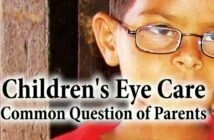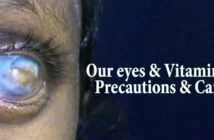Winter Can Intensify Dry Eye Symptoms
Dry eye is a common condition that is sometimes noticed more when winter air becomes dry. Symptoms for this condition may include a feeling of dryness, grittiness, stinging, burning or scratchiness. Another way dry eye can manifest is excess tearing or watery eyes.
It occurs when there is lack of production by tear glands or when tears are of poor quality. To understand dry eye, it’s important to understand tear structure and why that makes a difference.
Tears are essential to eye health
Your eyes produce tears that are much more than salt water. They are comprised of three different substances, each one playing a role in keeping the eye tissue lubricated and healthy. Tears are made of an oily outer layer, a watery middle layer and a mucous layer directly on the eye surface. The oil keeps the watery layer from evaporating and the mucous helps to keep the tear layer spread evenly over the eye each time the eye blinks.
Tears also must be produced in an amount sufficient to lubricate the eyes. Tears are made in several different glands located around the eye in the lids. As eyes age, they often produce fewer tears. Some medications or medical conditions can also diminish the tear production as a side effect. The eyes also provide drainage for tears in the eyelids, and when the drainage becomes blocked, watery eyes can also occur.
What are the causes of dry eye?
The medical term for dry eye syndrome is keratoconjunctivitis sicca (KCS). There are many causes that may make you more likely to be diagnosed with dry eye.
- Age – most people over the age of 65 experience some form or dry eye as part of the natural aging process.
- Women – Changes associated with hormones (pregnancy, oral contraceptives and menopause) make women more likely to develop dry eye.
- Environmental – Surroundings that are drying, like low humidity, smoke or smog can cause dry eye symptoms. Also computer work or other activities that reduce the amount of blinking can dry the eye out.
- Medical conditions – Inflammation of the eyelids (blepharitis), or eyes, as well as other health conditions including rheumatoid arthritis, diabetes or thyroid conditions can all cause symptoms of dry eye.
- Vision correction – If you’ve had Lasik surgery or are a long-term contact lens wearer, you may experience decreased tear production leading to dry eye.
How is Dry Eye Diagnosed?
Your eye doctor will employ a combination of your health history and a visual examination of your eyes and eyelids. He or she will review externally with a bright light and magnification and make note of your blink dynamics. A sample of tears may be analyzed and sometimes a solution containing special dyes will be used to evaluate the quality of the tears as well a any corneal tissue irritation.
Treatment options
Dry eye can be an ongoing or chronic condition, but there are some simple measures available to increase your comfort.
- Supplement tears. Using an over-the-counter artificial tears solution with no preservatives can add tear volume and improve lubrication.
- Retain tears. Tear ducts that are present in the eye to drain tears away can be temporarily blocked with tiny gel or silicone plugs, or permanently closed through surgery.
- Increase tear production. Your eye doctor may prescribe an eye drop that helps to increase the number of tears produced. Dietary supplements of Omega-3 fatty acids containing DHA and EPA may also be included to help increase tears naturally. Studies have shown that these two substances can reduce dry eye occurrence by as much as 17%.
- Treat an underlying condition. Your eye doctor may identify an underlying condition that is producing the dry eye symptoms. Treating inflammation of the eyelids or eye surfaces may include warm compresses, prescription eye drops or ointments or eyelid cleaners.
Prevention
There are some things you can do to prevent dry eye symptoms, especially in winter months.
- Increase the humidity. A small humidifier in your home can add moisture to the air.
- Remember to blink! Extended computer use can lead to dryness because we tend to blink less.
- Wear sunglasses. Sunglasses can protect your eyes from the sun and the wind’s drying effects.
- Drink plenty of water. Keeping well hydrated throughout the day will help to keep your eyes moist.
- Add Omega-3 to your diet. Either through dietary supplements of food sources, adding omega-3 fatty acids to your diet can forestall dry eye in some people.
Dry eye can be uncomfortable but it is relatively easy to prevent and to treat. If you are feeling any symptoms of grittiness, dryness or tearing, talk with you eye doctor about the options for treatment.
Source: CONWAY EYE CARE



